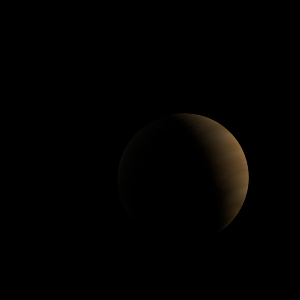|
|
Space Astro
|
Info for exoplanet "Mipo Byatsu"
| Scientific (actual) data |
|---|
| Name | GJ 1214 b |
| Planet status | Confirmed |
| Planet mass | 0.02571 |
| Radius | 0.24463 |
| Orbital period | 1.5804 |
| Semi major axis | 0.01411 |
| Orbit eccentricity | 0.27 |
| Inclination | 88.17 |
| Angular distance | 0.001077 |
| Discovered | 2009 |
| Updated | 2022-09-09 |
| Tzero tr | 2454970 |
| Publication | Published in a refereed paper |
| Detection type | Primary Transit |
| Mass measurement type | Radial Velocity |
| Radius measurement type | Primary Transit |
| Molecules | He |
| Star name | GJ 1214 |
| Right ascension | 258.83° |
| Declination | 4.96° |
| Mag v | 14.71 |
| Star distance | 13 |
| Star metallicity | 0.39 |
| Star mass | 0.15 |
| Star radius | 0.216 |
| Star sp type | M |
| Star age | 6 |
| Star temperature | 3026 |
| Wikipedia article | GJ 1214 b |
Back
| |
| Fictional info (?) |
|---|
| Suggested name | Mipo Byatsu |
| Planet type | Small hot gas planet |
| A prominent result is the "great blue spot", a giant storm that is known to have existed for centuries since it was first observed by radar. |
| Atmosphere | He | 99% |
| Atmospheric pressure | 80 bar |
 |
| No known satellites |
| Google search for Mipo byatsu |
|
Website by Joachim Michaelis
|
|
|
|